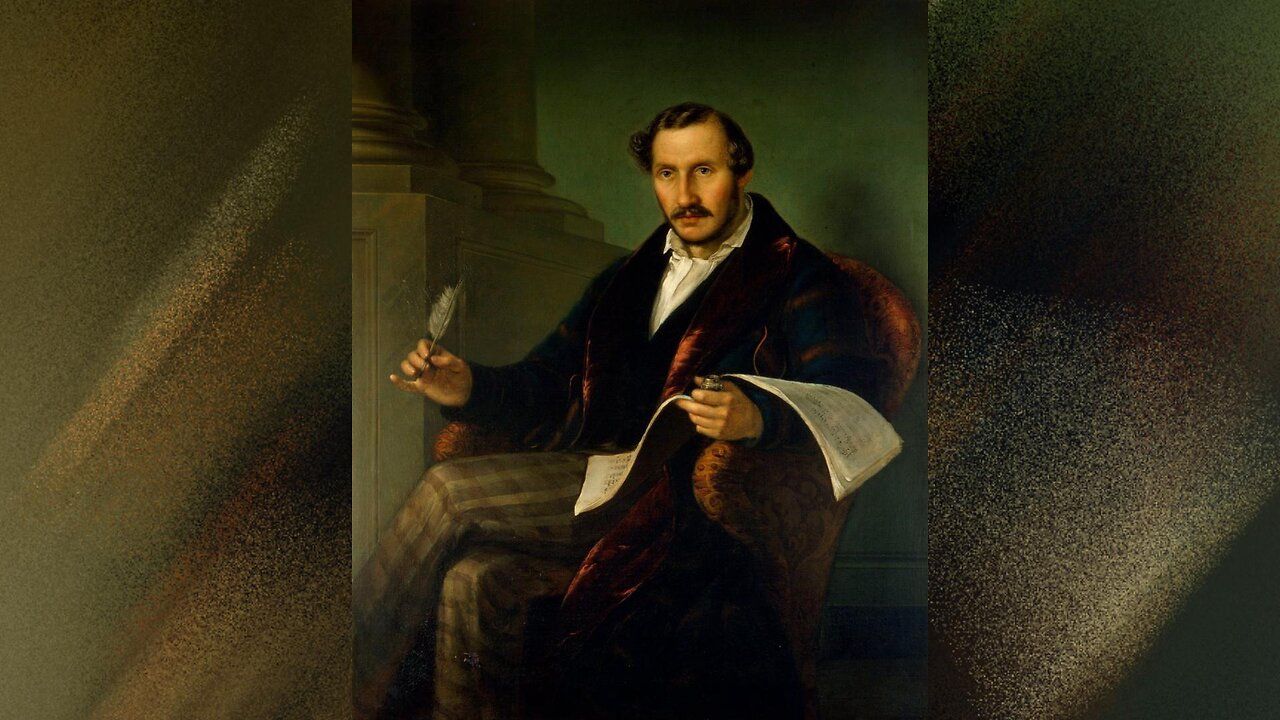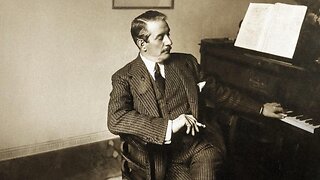Premium Only Content

La Storia siamo Noi: Gaetano Donizetti (ENG SUB)
Gaetano Domenico Maria Donizetti (Bergamo, 29 November 1797 – Bergamo, 8 April 1848) was an Italian composer, one of the most famous opera composers of the nineteenth century. Counted among the most prolific composers in history, Gaetano Donizetti's operas, for which he is still much loved by audiences, performers, and scholars, number seventy-one: from the first, Il Pigmalione, to the last, which, depending on the date of the beginning or completion of the composition, are respectively Dom Sebastien de Portugal or Caterina Cornaro.
To these must be added the unfinished and reworked works attributed to him, as well as those he was about to write, for which he had serious negotiations. The exact numbering becomes difficult to determine, as many of them have been revised in French or have undergone modifications depending on the theater and the singers available.
A striking example of this Donizetti procedure is the opera Lucrezia Borgia, which includes a sub-family of eight operas performed with different titles and different protagonists depending on the theatre where it was performed: Alfonso di Ferrara, Eustorgia da Romano, Giovanna I di Napoli, La Rinnegata, Elisa da Fosco, Nizza di Granata, Dalinda. Equally copious is the production of sacred and chamber music, oratorios, cantatas, hymns, orchestral instrumental music, quartets, quintets, music for piano for two and four hands, melodies for one, two, three or more voices, and miscellanies of unpublished pieces.
Donizetti's operas most frequently performed in theaters around the world today are L'elisir d'amore, Lucia di Lammermoor, and Don Pasquale. Also frequently performed are La Fille du régiment, La favorite, Anna Bolena, Maria Stuarda, Roberto Devereux, and Lucrezia Borgia.
Gaetano Donizetti died in Bergamo on April 8, 1848. An autopsy was performed on April 11, which confirmed the cause of death as meningovascular syphilis, the brain lesions of which were certainly the reason for his severe migraines.
Donizetti learned a solid and confident musical technique at the school of Mayr and Mattei, based on the Viennese classics (Haydn, Mozart and Beethoven) and Italian classics (Palestrina, Corelli, Pergolesi). He made his debut in musical theatre with works still influenced by the Rossinian style, which was then in fashion, but with already personal characteristics, such as the attention to the psychology of the characters and the greater dramatic and pathetic commitment in the development of situations. Donizetti soon discovered the Neapolitan operatic tradition, which he renewed in a Romantic sense thanks to an ardent dramatic inspiration and a lyrical and melancholic musical sensibility, and already with Anna Bolena he created a new model of Romantic lyrical drama, definitively breaking away from Rossini.
Thanks to his stay in Naples, influences from popular music were also added, which led him to renew the traditional stylistic schemes and modules, especially through the psychological and human exploration of the characters who are removed from the schematic nature of their roles and redefined by the composer with affection and participation. In his mature operas, Lucia di Lammermoor, La Favorita, and Don Pasquale, Donizetti found expressions of definitive balance and perfection, rising above the provisional and uncertain elements of his previous, redundant and hasty output. This production was dictated by the conditions of theatrical life at the time, and unlike Rossini, Bellini, or Verdi, Donizetti never rebelled against them.
These mature works, with their wonderful melodic construction, their effective dramatic style, the psychological and pathetic exploration of the characters born of a new Romantic sensibility, and the complete stylistic unity of the whole, make Donizetti one of the greatest Italian opera composers of the early nineteenth century and the greatest precursor of Verdi.
His operatic output was accompanied by a notable vocal, religious (including a Requiem Mass for Bellini's funeral), piano and instrumental production (including nineteen string quartets, which according to some scholars are among the best written in Italy in the 19th century).
-
 47:59
47:59
Adaneth - Arts & Literature
5 days agoStoria siamo Noi: Giacomo Puccini (ENG SUB)
30 -
 LIVE
LIVE
Side Scrollers Podcast
3 days ago🔴FIRST EVER RUMBLE SUB-A-THON🔴DAY 3🔴WAKE YOUR ASS UP!
1,110 watching -
 19:16
19:16
Jasmin Laine
16 hours agoCBC Gets FACT-CHECKED By Guest—Carney BEGS Poilievre For Help
17.1K14 -
 8:50
8:50
The Shannon Joy Show
14 hours agoBREAKTHROUGH Cancer Treatments With Dr. Makis
6.95K3 -
 9:10
9:10
Faith Frontline
13 hours agoMatthew McConaughey Just Said What No Celebrity Dares to About Jesus
10.2K2 -
 27:03
27:03
Take FiVe - His Glory
1 day agoEp 2112: Sam Anthony: How Citizen Journalism is Replacing Legacy Media | Take Five
14K2 -
 10:01
10:01
Breaking Points
19 hours agoKJP GASLIGHTS On Biden's Age In BONKERS Book Tour
10.8K1 -
 11:31
11:31
Nate The Lawyer
16 hours ago $1.19 earnedJohn Bolton Indictment Explained | Even MSNBC Says He Is in BIG Trouble!
14.9K2 -
 25:46
25:46
DeVory Darkins
1 day ago $12.69 earnedICE raid erupts into chaos when protestors targeted ICE Agents as ABC suffers disastrous interview
25.6K33 -
 6:06
6:06
Congressman Eli Crane
21 hours agoThe "Affordable" Care Act | Democrats' Greatest Lies – Vol. 3
10.1K3